Run With, Not Away From Your Brain: How Running and Other Exercises Can Strengthen Your Mind Muscle!
Have you ever heard of a runner’s high?
If you have, you might imagine runners feeling extra great after a tough run or wonder how on Earth someone could feel good while running.
As someone who has been a runner for over five years, I have done my fair share of races, trying new shoes, injuring different limbs, and trying all of the different ways claimed to make running feel less hard. All of this, because I love running.
However, I still do not know what a runner’s high is because I’ve never had one.
Instead, what I found was that the concept of running and the experience of it is what truly brought me the most healing, and drives why I still run. The toughest runs were actually the most beneficial because despite feeling pain and fatigue in my body, my mind would feel clearer and more energized after. Why?
One aspect that I have found particularly helpful in managing anxiety, processing trauma, and relaxing is the bilateral stimulation that the movement of running and walking can provide.
Bilateral Stimulation
Bilateral stimulation is the technique of stimulating both sides of the brain by alternating the activation between the right and the left hemispheres to calm the brain and nervous system. If you have ever heard of Eye Movement Desensitization and Reprocessing Therapy (EMDR), you have heard about a type of therapy that involves the alternation of stimulating both sides of the body and brain to help an individual process trauma. In a way, running or walking can provide a similar effect.
When we run or walk, we fall into our own natural kinesthetic rhythm by alternating our right and left sides through our footsteps, leg movement, and swinging of arms. All, while processing our surrounding scenery and sounds. That is why, when running or walking, we might find ourselves thinking more deeply about troubles in our lives, having new ideas, or getting lost in our thoughts.
In fact, there are so many ways we can activate both sides of our brains, through yoga, martial arts, dancing, stretching, and more!
Since learning about bilateral stimulation and the health benefits it can offer, I have begun incorporating my knowledge into my runs, especially on the tougher days.
Next time you go for a run, walk, or go to exercise, try these techniques to see if you can catch yourself using some bilateral stimulation!
Getting Both Sides Moving
Notice the rhythm that your body is moving in as it swings from side to side. Notice how your limbs fall into rhythm and how both sides of your body compliment one another to maintain unified movement.
Pay attention to the sounds around you and try alternating your attention between the sounds you hear to your left and those you hear on your right.
Tune into the sensations throughout your body. What sensations do you notice on your left side? What about your right side?
Focus on your surroundings and how your eyes move across your visual plane. How do you look from side to side and maybe even top to bottom?
Ask yourself: what does it feel like to be in my body and physically moving both sides as one?
Move With, Not Away
As you try these techniques, allow yourself to fall into a rhythm that matches your cadence, pace, and at the speed that you can most easily follow. The key is to be connected with your mind and body and the kinesthetic experience of the exercise.
Then, see where your mind takes you!
-
Navigating Body Image During the Summer and How Every Body is Summer-Ready
Like an Onion: Peeling Back the Layers of Emotional Discomfort
Practicing Coping Skills Before You Need Them and Start Benefiting From Them When You Do
How to Start Acting as the Person Who You Want to Be!
Embrace Unhelpful Thoughts and Continue Focusing on What Matters Most to You!
The Power of “And”: The Art of Balancing the Dreams and Limits of Our Inner Worlds!
Search Our Other Blogs!
Interested in Online & In-Person Counseling for Self-Confidence, Anxiety, & Stress?
If you’re a Marylander who knows that counseling is the direction you need to take, the therapists at LifeSpring Counseling Services are here to help. We offer online counseling services for mindfulness, depression, anxiety, trauma, and grief and loss. We also offer Brainspotting as a specialized service, and Brainspotting can be done online, too!
Here’s how you can get started! Online and in-person counseling for self-confidence, anxiety, and stress aren’t the only services offered at our Monkton, MD office.
The counselors and social workers at our Maryland office also offer counseling services for trauma, grief and loss, boundary setting, communication skills, and difficult life transitions. We also offer specialized counseling services including Brainspotting and spiritually-integrated counseling. Because we are located next to several local universities, we also work with college students and international students.
Written by: Sophie Koch, LGPC
Sophie is a LifeSpring therapist who offers online and in-person counseling services to adolescents and adults (15 and up) to offer help with depression, anxiety, borderline personality disorder, trauma, and mood disorders.


